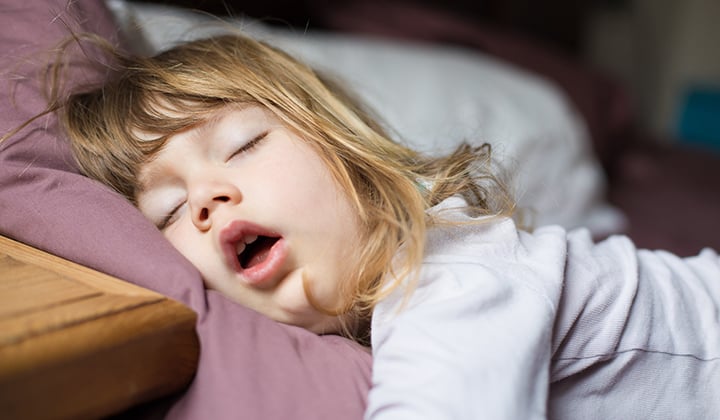Get updates
Have a parenting hack to share? Or a topic you'd like to see?
Sleepwalking – answers to your frequently asked questions

As a parent, it can be scary to wake in the morning and find your child is not where you laid them down the night before. While it can be jarring to find your child was sleepwalking through the night, this is a benign condition, and there is usually no underlying cause. But parents still want answers – what are the causes, when should I be concerned and how do I keep my child safe? We cover all of your FAQs below.
What causes sleepwalking?
Sleepwalking is caused by a partial arousal from deep sleep, during which the sleepwalker can walk or even perform complex actions. Again, this is typically a mild condition that isn’t overly concerning. Although there is potential that an underlying cause is involved, this could be a simple sleep routine issue like a new environment or change in typical bedtime steps.
If you notice your child is snoring, sleep apnea could be causing the partial awakening, in which case you should discuss with your pediatrician if a referral to sleep specialist is needed. Anxiety or life stressors can also be an underlying cause, so talk to your child if you are seeing these signs or changes in behavior. Also, sleepwalking is known to run in families, so if one parent previously had sleepwalking episodes, it is not uncommon for their children to follow suit.
Are there certain ages when sleepwalking is most common?
Most children who sleepwalk do so between 4-6 years old. It can also worsen from ages 8-12. Most children simply outgrow sleepwalking by their teen years, but it can persist into adulthood in rare cases.
How do I react if I find my child is sleepwalking?
If you are around your child during their sleepwalking episode, gently redirect them safely back to bed. Do not try to wake a child in the middle of a sleepwalking episode as they can become alarmed.
It is also recommended to not discuss the events with them the next day. People who sleepwalk do not remember it, so it could cause increased anxiety and worsen the sleepwalking.
How can I keep my sleepwalking child safe?
People can perform complex behaviors during sleepwalking, so it is important to ensure your child’s safety as best you can. Some ideas include:
- Locking doors and windows
- Moving anything sharp or harmful out of reach
- Lock and disassemble any firearms
- Move house keys so they are not accessible
- If the child’s bedroom is on an upper floor, have a gate on the stairs to avoid falls
- If the child sleeps in a bunk bed, move them to the bottom bunk
- Place cushioning on the floor in the event of a fall
- Use an alarm on the child’s door to alert you if they are leaving their room
If your child is staying with a friend or relative away from home, be sure to communicate with the adult in charge that your child has a history of sleepwalking. New environments can trigger sleepwalking events, so it’s best everyone is prepared.
How can I stop it, or do they simply outgrow it?
Most often, there is no underlying cause and no need to treat sleepwalking. Although, if you suspect a medical condition such as sleep apnea (signs including snoring, gasping for breath) or your child shows signs of stress or anxiety that could be triggering the sleepwalking, consult your pediatrician.
Otherwise, the most important thing for your child is a consistent sleep schedule, bedtime routine and ensuring they get enough rest. The American Academy of Sleep Medicine recommends different amounts of sleep depending on your child’s age:
- Infants (4-12 months): 12-16 hours including naps
- Ages 1 and 2: 11-14 hours including naps
- Ages 3 to 5: 10-13 hours including naps
- Ages 6 to 12: 9-12 hours
- Ages 13 to 18: 8-10 hours
Sleepwalking can be stressful for you and your child, but with these tips, we hope you’re assured this is just another fun parenting phase that soon will pass.
